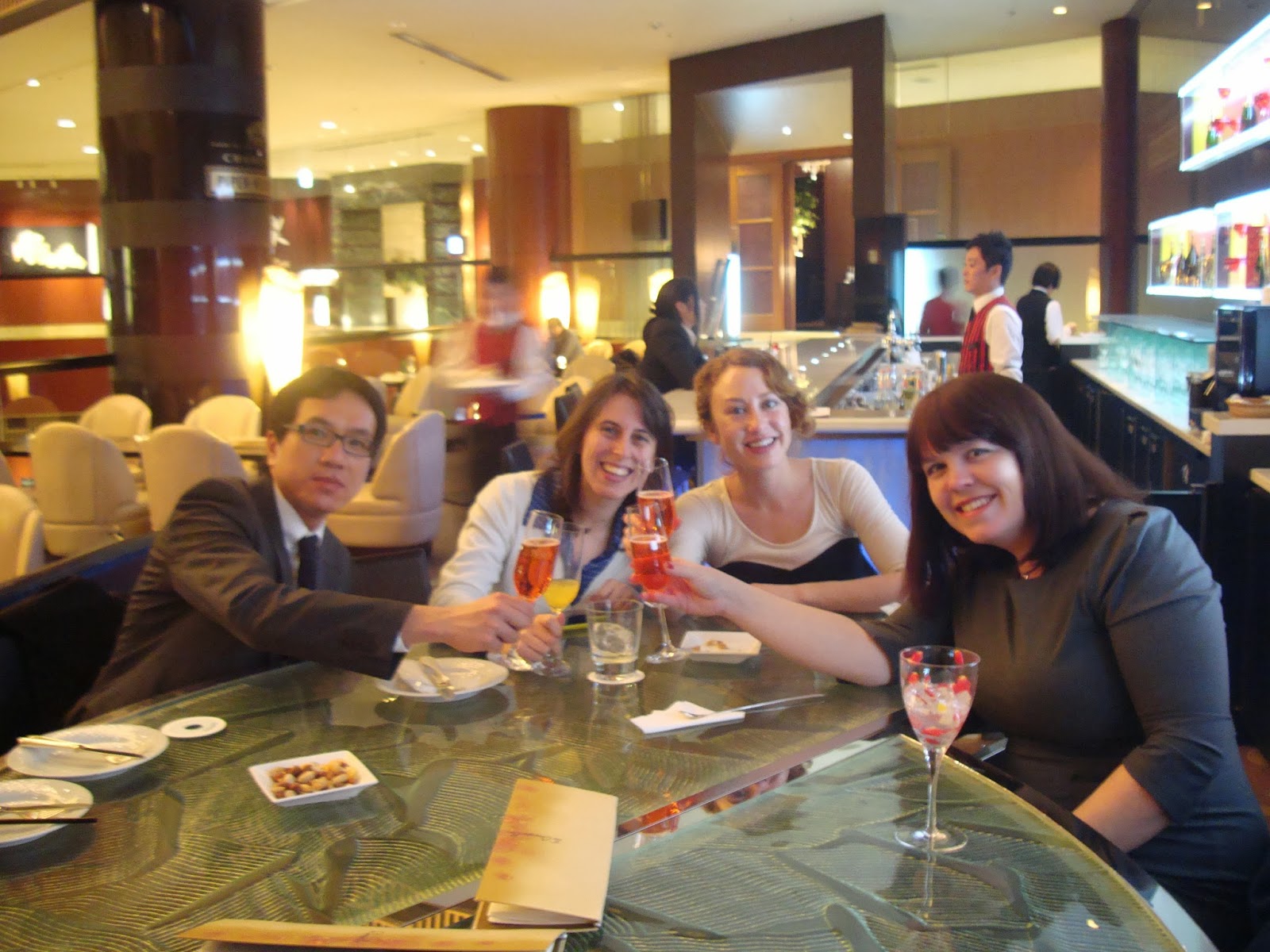Pre-game cocktails with Ti, Mimi, and Talia.
On Wednesday evening I attended a reception at the Ambassador's Residence to welcome the new heads of
JUSEC (the organization that oversees Fulbright) and
CULCON. A few friends and I started the evening with cocktails at the Inter-Continental before heading over to the party.
Front door of the Residence.
The
Residence is a beautiful building, built in the early 1930s. It was the location for the famous
photograph of the meeting of General Douglas MacArthur and Emperor Hirohito in the days after WWII.
The front hall.
Of course, the food was fantastic too- lobster, crab, duck, polenta, salad, cheeses, and so many delicious things. I may have eaten my tax dollars in lobster.
Not my photo, but a nice shot of the dessert table.
Also not my photo, but yum.
There were speeches by the Ambassador, and the new directors being honored.
Ambassador Kennedy speaking about intercultural exchange.
Of course the highlight of the evening was meeting Ambassador Kennedy, who took the time to greet the Fulbright grantees and to ask about each of our research.
Group photo of Fulbrighters and Ambassador Kennedy (not mine). I'm just to the right of the Ambassador.
Also not my photo, but here is the back of my head as I speak with the Ambassador about my research. Doesn't she look genuinely interested?
As was to be expected the Ambassador was surrounded by people throughout the two and a half hour reception, and was carefully whisked through the crowds by her two handlers, who were ensuring that she had face time with all of the right people. It was a lovely event though, and a great opportunity to meet Caroline Kennedy and many other people, as well as to see the Residence itself. You can see more photos of the evening here.
Mimi and I as we left the Residence. America!

































































